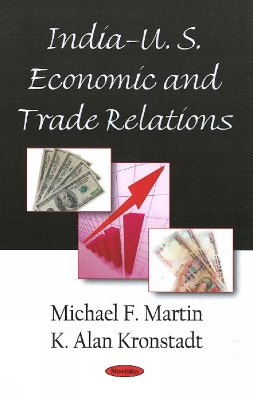After decades of strained political relations, the U.S. and Indian governments are currently pursuing a "strategic partnership" based on numerous overlapping interests, shared values, and improved economic and trade relations. India is in the midst of a rapid economic expansion, and many U.S. companies view India as a lucrative market and a candidate for foreign investment. For its part, the current Indian government sees itself continuing the economic reforms started in 1991, aimed at transforming a quasi-socialist economy into a more open, market-oriented economy. However, the U.S. government is concerned that India's economic reforms are progressing too slowly and unevenly. Bilateral merchandise trade has grown from $6 billion in 1990 to $33 billion in 2006. Although India was only the 21st largest export market for the United States in 2006, the United States has become India's leading trading partner, mostly due to the growth in India's exports to the United States. However, recent increases in trade with China have made it a close second to the United States. In 2006, the U.S. bilateral trade deficit with India totalled $13 billion. In 2006, India's gross domestic product (GDP) grew by 9.2%, a growth rate second only to China among Asian nations. India's economic growth has also brought about the emergence of a sizeable "middle class" and the largest number of billionaires in Asia, but the country's mostly rural population remains comparatively poor and largely isolated from the benefits of growth. In addition, there is growing concern that the economy is "overheated", as evidenced by rising rates of inflation. Moreover, despite several years of strong growth, investment in infrastructure is lagging, creating a potential bottleneck for long-term economic expansion. Finally, attempts at additional economic reforms aimed at resolving these and other economic problems are constrained by India's political dynamics. Despite the significant liberalisation of India's trade and foreign investment policies, there remain a number of bilateral and multilateral trade issues between the United States and India. The United States seeks greater market access to India's agricultural market and key service sectors for its exports and for foreign direct investment. The United States is also concerned about "outsourcing", and would also like to see improvements in India's intellectual property rights protection. India, for its part, calls for the lowering of perceived U.S. barriers to agricultural and service imports, as well as an expansion of the H-1B visa program. Many of the more prominent Indo-U.S. trade issues may have indirect implications for Congress. The growth of India's services exports to the United States has contributed to congressional consideration of possible legislation to provide greater assistance to displaced U.S. workers. Also, India's growing demand for crude oil has raised the possibility of boosting bilateral energy co-operation. Finally, the passage of the Hyde Act in 2006 (PL 109-401) has led to the negotiations of a bilateral peaceful nuclear co-operation ("123") agreement, which cannot go into effect without congressional approval.
- ISBN10 1604567562
- ISBN13 9781604567564
- Publish Date 27 November 2008
- Publish Status Active
- Publish Country US
- Imprint Nova Science Publishers Inc
- Format Paperback
- Pages 94
- Language English
